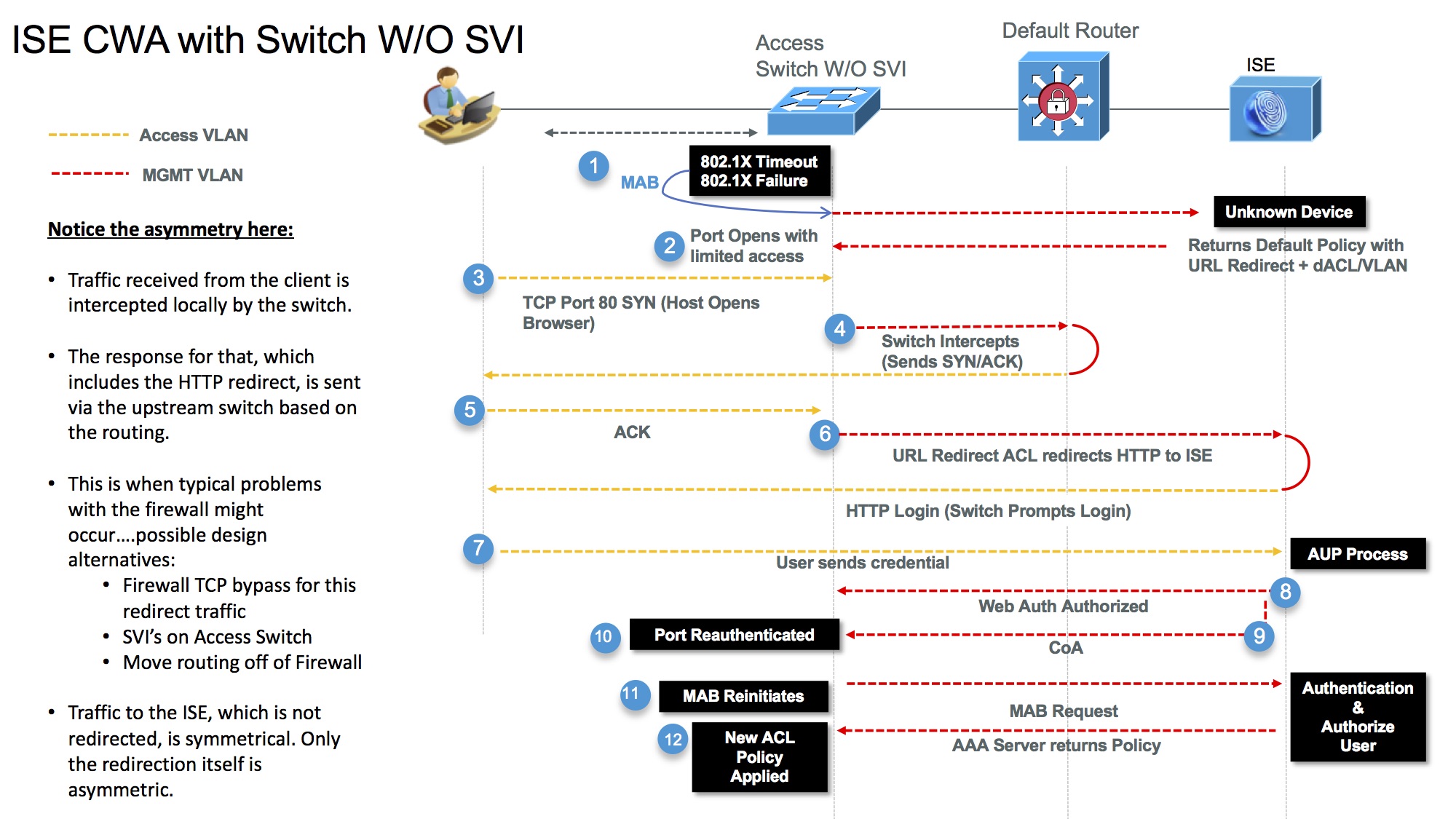- Cisco Community
- Technology and Support
- Security
- Network Access Control
- ISE CWA Flow Validation
- Subscribe to RSS Feed
- Mark Topic as New
- Mark Topic as Read
- Float this Topic for Current User
- Bookmark
- Subscribe
- Mute
- Printer Friendly Page
- Mark as New
- Bookmark
- Subscribe
- Mute
- Subscribe to RSS Feed
- Permalink
- Report Inappropriate Content
03-07-2018 09:01 AM
Hi Team,
I'm working on an ISE POC with a customer and we ran into an issue with ISE CWA on switches without SVI's in the Data/Access VLAN's. The customer is using an ASA as their default GW for all vlans so every vlan needs to go through policy for communication. I have put together the attached flow based on information I have read but would like to verify this is correct and I'm not missing anything. Due to the asymmetry of how URL Redirection works, I can see how this will cause a problem with Firewalls. I have also added some alternative designs in the image. Is there any Best Practice Designs with this type of scenario? Also, Is this flow accurate?

Solved! Go to Solution.
- Labels:
-
Identity Services Engine (ISE)
Accepted Solutions
- Mark as New
- Bookmark
- Subscribe
- Mute
- Subscribe to RSS Feed
- Permalink
- Report Inappropriate Content
03-07-2018 09:00 PM
Summation is correct and yes, we have seen customer's hit issue when default GW is a firewall due to reasons noted.
I have also posted a number of flows here ISE Auth-Feature Flows_v1.pdf and similar scenario is highlighted in an "oldie but goody" guide here IBNS: Web Authentication Deployment and Configuration Guide - Cisco in section titled "TCP Traffic Flow for Login Page When No Layer 3 SVI for Host VLAN Exists on Access Switch". This older guide is talking about local web auth, but the redirection concepts are the same.
- Mark as New
- Bookmark
- Subscribe
- Mute
- Subscribe to RSS Feed
- Permalink
- Report Inappropriate Content
03-07-2018 09:00 PM
Summation is correct and yes, we have seen customer's hit issue when default GW is a firewall due to reasons noted.
I have also posted a number of flows here ISE Auth-Feature Flows_v1.pdf and similar scenario is highlighted in an "oldie but goody" guide here IBNS: Web Authentication Deployment and Configuration Guide - Cisco in section titled "TCP Traffic Flow for Login Page When No Layer 3 SVI for Host VLAN Exists on Access Switch". This older guide is talking about local web auth, but the redirection concepts are the same.
Discover and save your favorite ideas. Come back to expert answers, step-by-step guides, recent topics, and more.
New here? Get started with these tips. How to use Community New member guide
